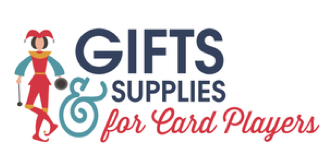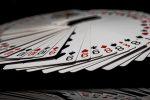How to Bluff Like a Pro in Poker
Poker is a game of skill, luck, and strategy. It requires players to think on their feet and make immediate decisions. As such, players must learn how to bluff like a pro. Bluffing can be an effective tool when playing poker, allowing you to take control of the pot or even win hands you otherwise wouldn’t have won.
Knowing when and how to bluff correctly can give you an edge over your opponents and increase your chances of winning more money at the table. This article will discuss tips for successful bluffing to become a master bluffer and improve your overall poker skills.
What Is Bluffing in Poker and Why Do Players Do It?
Bluffing is a core element of poker, in which players use tactics and strategy to deceive and mislead their opponents to win the game. Bluffers strategically size up a situation before deciding whether to act or not. For example, if they think an opponent will fold after a big bet, they will bluff that they have unique cards regardless of what cards they hold. If a bluffer suspects their opponent has decent cards, taking aggressive risks may not pay off.
Instead, bluffers may opt for more subtle gambits like slow-playing, checking, and raising instead of large bets, which might force their opponents out of the pot too early. Ultimately, the goal of any poker is to outsmart one’s opponents and claim victory–and that often involves the successful execution of bluffs.
The Different Types of Bluffs and When to Use Them
There are various bluffs – ranging from the semi-bluff, which uses your current cards combined with folded cards on the table as leverage – to false tell cliffs, which use movements and mannerisms to fool opponents into believing in the strength of your hand. Knowing when to use each type of bluff is critical to success in poker.
A risky bet can be a good idea if done right; however, unnecessary or frequent bluffing may give away your strategy and cause players confusion. In other words, you knowing when to bluff and when not to is paramount for success with this technique while playing online poker.
How to Read Your Opponents and Determine when They Are Bluffing
Knowing when your opponents are bluffing can give you a significant advantage when playing card games. In addition, reading body language is essential, as this can reveal clues as to someone’s confidence level in their play. For example, observing foot and arm movements, posture, and the volume of their speech could all be telltale signals when devising an effective strategy.
Additionally, an opponent who tends to make small bets on weak hands but goes all-in when they have a good indicator is typically bluffing. Finally, pay attention to betting patterns throughout multiple rounds; if someone made large bets regularly before folding, this could indicate that it was probably a bluff.
Tips for Successful Bluffing
One of the most challenging parts of playing poker is finding success through bluffing. This can be done successfully by perfecting various techniques, such as confidently carrying yourself and not exhibiting any signs of nervousness.
It is also essential to remain in control to keep track of your opponents’ decisions and behaviors, which may provide hints about their hands. Additionally, knowing when the best time to bluff will depend on the type of opponent you are facing and their betting patterns, allowing you to guess when they are more likely to fold.
Lastly, a successful bluff should only be attempted when there is a realistic chance that everyone else at the table will fold. Doing so will give you much-needed leverage when playing your game without risking too much.
When to Give up on a Bluff and Fold Your Cards
When playing a game of poker, learning when to give up on a bluff is part of the skill set that contributes to success. To begin with, if the other players involved have strong hands, it is time to fold your cards and accept defeat. Additionally, if the pot size becomes too large for the amount you have in your stack, folding is also a sensible option, as you may risk more than you can cover.
Lastly, if the other players decide between calling or raising, it may be wise to refrain from investing further after having already made an initial raise. Understanding these scenarios will help you develop strategies for different situations, ensuring that you make the best decision possible and avoid unnecessary risk.
Conclusion
Although bluffing can be risky, it can also be an effective way to increase your chances of winning in certain situations. Players will become more successful with this technique by understanding when it is best to use a bluff and how to read and react to opponents.
With practice and experience, learning these skills will help you devise more effective strategies for success in poker. In the end, mastering when and how to bluff is key to winning poker games.
Photo by Clayton Robbins on Unsplash





